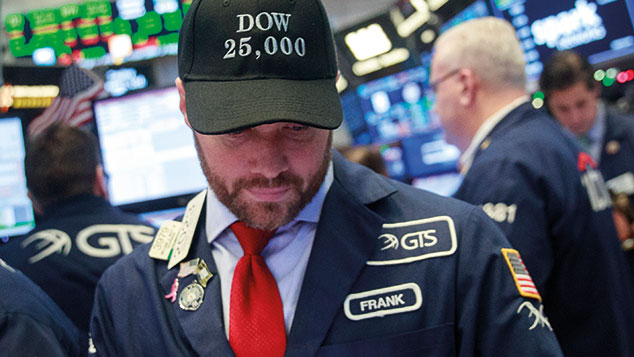
Dow 23,000! Dow 24,000! Dow 25,000! In recent months, the investment press has had no shortage of big round numbers to get overexcited about as the Dow Jones Industrial Average – one of the headline stockmarket indices in the US – has hit high after high. Some reporters have even taken to measuring the speed of each sprint. For example, The Wall Street Journal suggested that the Dow’s recent run from 24,000 to 25,000 was the fastest 1,000-point gain in its history.
This is plain daft, as John Authers points out in the Financial Times. First, it should go without saying that, in percentage terms, climbing 1,000 points from 24,000 is less of an achievement than gaining 1,000 points from 20,000. Second, the “record-breaking” claim is not true – it took 35 days to hurdle the most recent 1,000-point milestone, a feat matched twice before in the past. But there’s an even more compelling reason to ignore the Dow – it’s a “useless index”.
Consign the Dow to history
The Dow index was first calculated in 1896 by Wall Street Journal editor and Dow Jones & Company founder Charles Dow. The original had 12 stocks, chosen by Dow to give a sense of how America’s industrial companies were doing (Dow also published a Dow Jones Transportation Average, which focused on railroad companies). There are now 30 stocks, which are handpicked to be representative of US business in general. This is clearly not particularly scientific – but that’s the least of its worries.
Unlike market-cap-weighted indices, the Dow is not weighted according to a company’s market value, but rather its share price. So Goldman Sachs, with a share price of around $255, carries more weight in the index than tech giant Apple ($175 a share), even though Apple is nearly ten times bigger in terms of market cap than the bank. Similarly inadequate indices include Japan’s Nikkei 225 – the Topix index is a far better alternative.
You could dismiss this as the sort of thing that only financial journalists and other pedants get worked up about. After all, broadly speaking, when the S&P is going up, the Dow goes up too, and the same on the way down. But if you are trying to measure the health of the corporate sector (or at least shareholders’ optimism about it), then you ideally want the measure to be as accurate as possible.
Besides, in reality the performance of the Dow and the S&P can diverge quite significantly at times. Incidentally, as James Mackintosh noted in The Wall Street Journal last year, a calculation error made when the index reopened after the start of World War I means the Dow’s current value isn’t even correct – by rights, it should have passed 30,000 at this time last year.